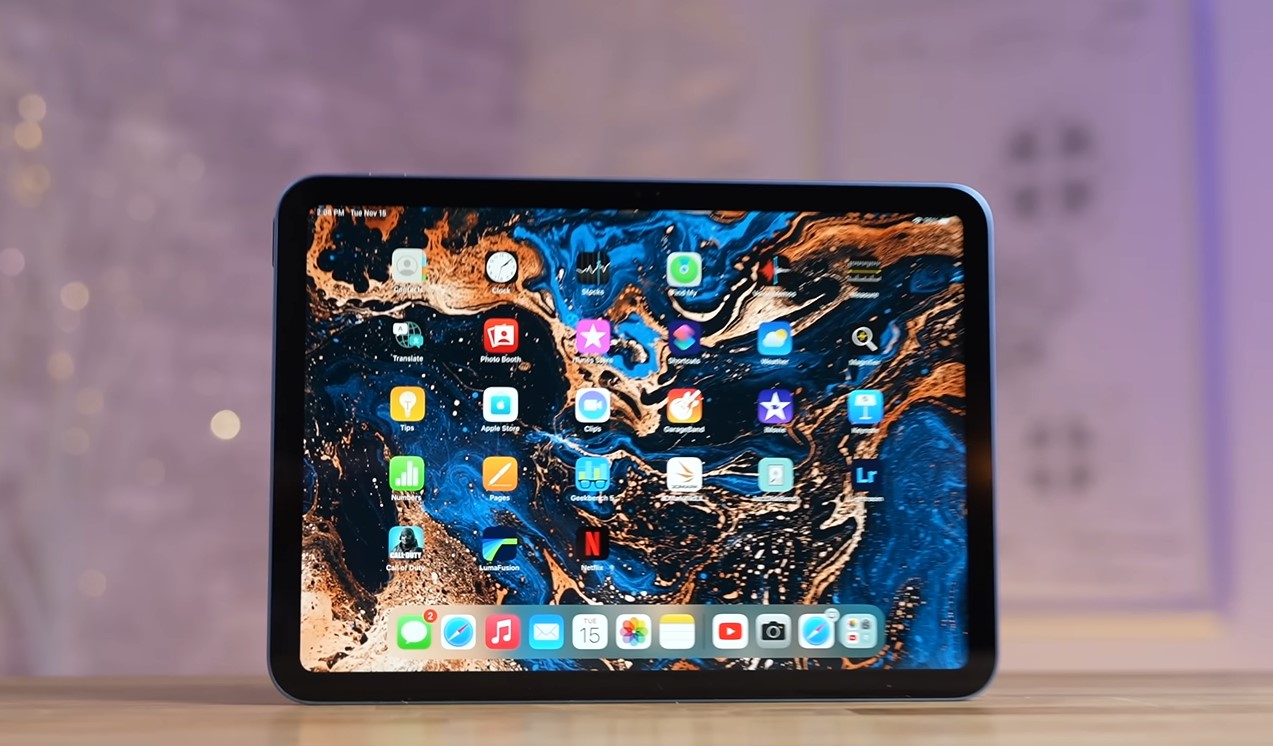Visual excerpt from the YouTube channel Max Tech. All rights belong to the original creator.
In the competitive world of consumer tech, Apple's iPad 10 has become a surprising success story. Originally met with criticism for its perceived high price and unusual design choices, the iPad 10 has gone on to achieve unexpected sales success, even outperforming cheaper alternatives and higher-end models in popularity.
Sales Success That Defies Expectations
When Apple launched the iPad 10, tech reviewers and analysts were skeptical. Many well-known YouTubers and technology critics openly doubted its potential, labeling it as overpriced and questioning the strategic decisions behind its design. Given these negative reviews, the iPad 10 was expected to struggle in a market already saturated with tablets offering both value and advanced features.
However, the latest sales data tells a different story. Amazon’s sales rankings show that the iPad 10 has quickly climbed to the second-highest position, with only the more affordable 9th-generation iPad outperforming it. For a tablet initially considered to be an unlikely candidate for success, these rankings are a clear indicator that the iPad 10 is resonating with consumers. The fact that it has gained traction, even surpassing several premium options, suggests a demand for its particular combination of features, despite its unconventional aspects.
Design Choices Spark Controversy
One of the most debated elements of the iPad 10 is its design. Apple deviated from its usual aesthetic and functional approach, opting for a thicker build and a horizontally oriented camera. While this new camera placement has won praise for enhancing the user experience—particularly for those who use the iPad in landscape mode—it also brought some limitations that frustrated users. For example, the iPad 10 does not support the Apple Pencil 2, a decision that puzzled many users who value this accessory for creative and productivity tasks. Instead, users must rely on the first-generation Apple Pencil, which, while functional, lacks some of the advanced features of the Apple Pencil 2 and requires an adapter to charge via USB Type-C. This charging method has been particularly frustrating for those using the iPad 10 in settings like classrooms, where convenience and efficiency are key.
Unconventional Moves with Unexpected Benefits
Despite the design controversy, the iPad 10 has shown remarkable performance in several key areas. One feature that has contributed to its success is its battery life. Powered by the A14 chip, the iPad 10’s performance is competitive with higher-end models. Apple has taken the strategic decision to underclock the processor, which lowers its power consumption, resulting in extended battery life. Many users report that the iPad 10 has proven itself in daily use, outlasting competitors in standby time and performing admirably in multitasking scenarios. This improved battery life, coupled with a reasonably powerful chip, seems to have struck a balance that appeals to users looking for both performance and longevity.
Compromises That Frustrate Users
The iPad 10 is not without its flaws, and its compromises have been the source of significant debate. Aside from the Apple Pencil 2 compatibility issue, the detachable keyboard has received mixed reviews. While the keyboard does add versatility to the iPad, critics have noted its high price and the absence of key features, such as backlighting, which users might expect for its cost. These limitations have disappointed those who rely on their iPads for professional or educational tasks and need a comfortable, feature-rich typing experience.
Furthermore, the iPad 10’s USB Type-C port, while an upgrade from previous models, has limitations in charging speed. Apple’s decision to cap the charging speed has left some users feeling short-changed, as they had hoped for faster, more efficient charging. The screen, too, is a point of contention: although the iPad 10’s display is bright and clear, it suffers from higher reflectivity compared to other tablets. This makes it challenging to use outdoors or in brightly lit environments, another aspect that some consumers feel Apple could have improved.
Balancing Value and Performance
Despite these criticisms, many consumers appear undeterred. The iPad 10’s performance and unique features, combined with Apple’s reputation for quality and user experience, seem to outweigh the perceived drawbacks. Those seeking a balanced tablet with solid battery life and the reliability of the Apple ecosystem find the iPad 10 a strong option. For some, the iPad 10’s unconventional aspects are minor trade-offs in the face of its overall performance.
Still, the tech community remains divided. On one hand, some view the iPad 10 as an example of Apple innovating within its product line, showing that they’re willing to experiment with design and functionality to differentiate models. On the other hand, others argue that Apple has made intentional compromises that limit the iPad 10, which they feel could have been a more powerful device. This debate centers around whether the iPad 10 is genuinely offering value for money or if it’s simply a case of strategic product differentiation.
A New Direction for Budget Tablets?
The ongoing success of the iPad 10 raises interesting questions about consumer expectations and product design in the budget tablet category. As it continues to capture market attention, the iPad 10 could set a new trend, prompting other brands to rethink how they approach tablet design and pricing. For Apple, the iPad 10’s success might reinforce their belief in creating devices with a unique blend of features that appeal to a broad range of consumers.
Looking forward, it remains to be seen how long the iPad 10’s momentum will last. While it is currently succeeding in a competitive market, there is potential for Apple to enhance future models by addressing the compromises that have led to mixed reviews. If Apple listens to consumer feedback and continues refining its approach, future iterations could see even greater success, blending performance with versatility without limiting key features.



















